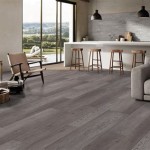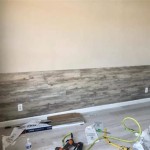What Can Be Used To Remove Paint From Wood Floors
The removal of paint from wood floors is a task frequently encountered in home renovation projects, particularly when restoring older properties. The successful removal of paint requires careful consideration of several factors, including the type of paint, the type of wood flooring, and the desired outcome – whether the goal is to completely strip the floor to bare wood or simply remove unsightly paint splatters. Various methods and products are available, each with its own advantages and disadvantages, making the selection process crucial for achieving optimal results while minimizing damage to the underlying wood.
Before embarking on any paint removal project, it is essential to properly prepare the work area. This preparation includes protecting surrounding surfaces with drop cloths or plastic sheeting to prevent the inadvertent spread of paint debris and stripping agents. Adequate ventilation is also critical, particularly when using chemical strippers, as these products often emit fumes that can be harmful if inhaled. Personal protective equipment (PPE), such as gloves, safety glasses, and a respirator, should be worn at all times to safeguard against chemical exposure and physical hazards.
Following preparation, it is advisable to test the chosen paint removal method on a small, inconspicuous area of the floor. This test patch will allow for the assessment of the method's effectiveness and its potential impact on the wood. Observing how the wood reacts to the stripping agent or technique will inform decisions regarding dwell time, application methods, and the necessity for neutralization or subsequent treatments.
Chemical Paint Strippers
Chemical paint strippers represent a common approach to removing paint from wood floors. These products typically contain solvents that soften or dissolve the paint, facilitating its removal with scrapers or other tools. Chemical strippers are available in various formulations, categorized based on their active ingredients. Common types include methylene chloride-based strippers, N-Methylpyrrolidone (NMP)-based strippers, and environmentally friendly or "green" strippers that rely on less aggressive solvents such as dibasic esters or soy-based derivatives.
Methylene chloride-based strippers are known for their effectiveness in removing multiple layers of paint and stubborn coatings. However, their use is regulated due to health and environmental concerns, as methylene chloride is a volatile organic compound (VOC) and a potential carcinogen. Careful adherence to safety precautions, including adequate ventilation and the use of appropriate respirators, is paramount when working with these strippers.
NMP-based strippers offer a less hazardous alternative to methylene chloride, although they still require caution and proper ventilation. While generally less aggressive than methylene chloride, NMP-based strippers can effectively remove many types of paint, particularly when allowed sufficient dwell time. The dwell time, which is the amount of time the stripper remains on the paint, is a crucial factor in achieving optimal results.
Environmentally friendly or "green" paint strippers, formulated with solvents derived from renewable resources, are gaining popularity as concerns about VOC emissions and chemical exposure increase. These strippers typically have lower VOC levels and reduced toxicity compared to traditional chemical strippers. However, they may require longer dwell times and multiple applications to effectively remove paint, especially thick or multiple layers of paint.
When using any chemical paint stripper, it is crucial to apply the product evenly and in accordance with the manufacturer's instructions. Allowing the stripper to dwell for the recommended time is essential for softening the paint adequately. After the dwell time, the softened paint can be carefully scraped away using a plastic scraper or putty knife. Metal scrapers should be used with caution, as they can easily damage the wood surface. Multiple applications of the stripper may be necessary to remove all traces of paint.
Heat Guns and Heat Plates
Heat guns and heat plates provide an alternative method for removing paint from wood floors, utilizing heat to soften the paint and facilitate its removal. Heat guns direct a stream of hot air onto the painted surface, while heat plates provide a more controlled and even distribution of heat. Both methods can be effective, but care must be taken to avoid scorching or burning the wood.
When using a heat gun, it is important to keep the gun moving to prevent overheating a single area. Holding the heat gun too close to the wood or dwelling on one spot for too long can cause the wood to char or ignite. The softened paint can then be removed with a scraper, similar to the process used with chemical strippers. It is crucial to work in small sections to maintain control over the heat and prevent damage to the wood.
Heat plates offer a more gentle and controlled approach compared to heat guns. These plates are placed directly on the painted surface, applying even heat across a larger area. This method reduces the risk of scorching or burning the wood, but it may require longer dwell times to effectively soften the paint. Heat plates are particularly useful for removing paint from large, flat surfaces.
Regardless of which heat method is used, proper ventilation is still important, as heating paint can release fumes and potentially toxic vapors. Wearing a respirator and ensuring adequate airflow will help minimize exposure to these harmful substances.
Sanding
Sanding is another common method for removing paint from wood floors, involving the use of abrasive materials to mechanically remove the paint layers. Sanding can be performed using either hand tools or power sanders, with the choice depending on the size of the area, the thickness of the paint, and the desired level of control.
Hand sanding is suitable for small areas or intricate details where precision is required. It involves using sandpaper of varying grits, starting with a coarser grit to remove the bulk of the paint and progressing to finer grits to smooth the surface. Hand sanding can be time-consuming, but it offers a high degree of control and minimizes the risk of over-sanding or damaging the wood.
Power sanding, utilizing tools such as orbital sanders, belt sanders, or drum sanders, is more efficient for larger areas. Orbital sanders are versatile and suitable for general paint removal and surface preparation. Belt sanders are more aggressive and effective for removing thick layers of paint, but they require careful handling to avoid creating uneven surfaces or gouges. Drum sanders are typically used for refinishing entire floors and should be operated by experienced individuals due to their aggressive sanding action.
When sanding paint from wood floors, it is crucial to wear appropriate respiratory protection, as sanding generates fine dust particles that can be harmful if inhaled. Using a vacuum cleaner or dust collection system to capture the dust as it is generated will further minimize exposure. Starting with a coarser grit sandpaper to remove the initial layers of paint is generally recommended, followed by progressively finer grits to smooth the surface and prepare it for refinishing.
It is important to note that sanding can generate significant amounts of dust, which may contain lead if the paint is old. Lead paint is a common concern in older homes, and exposure to lead dust can pose serious health risks, particularly for children and pregnant women. Therefore, it is essential to test the paint for lead content before sanding and to follow appropriate lead-safe work practices if lead is present.
Other Methods and Considerations
In addition to the methods described above, several other techniques and products can be used to remove paint from wood floors. These include using natural solvents such as orange oil or citrus-based cleaners, employing steam to soften the paint, or using specialized paint removal tools such as profile scrapers or detail brushes.
Orange oil and citrus-based cleaners are relatively mild solvents that can be effective for removing light paint splatters or thin layers of paint. They are generally considered safer than traditional chemical strippers, but they may require longer dwell times and multiple applications to achieve satisfactory results. Steam can also be used to soften paint, making it easier to scrape away. This method is particularly useful for removing paint from intricate moldings or detailed surfaces.
Specialized paint removal tools, such as profile scrapers or detail brushes, can be helpful for removing paint from specific areas or intricate designs. Profile scrapers are designed to match the contours of the wood surface, allowing for precise paint removal without damaging the underlying wood. Detail brushes can be used to apply chemical strippers or solvents to small, hard-to-reach areas.
Regardless of the method used, it is important to thoroughly clean and prepare the wood floor after removing the paint. This may involve washing the floor with a mild detergent solution to remove any residual stripping agents or cleaning solutions. Sanding may also be necessary to smooth the surface and eliminate any imperfections. Finally, the floor should be allowed to dry completely before applying any finish or sealant.
The selection of an appropriate finish or sealant is crucial for protecting the wood floor and enhancing its appearance. Various types of finishes are available, including polyurethane, varnish, lacquer, and oil-based finishes. The choice of finish will depend on the desired level of durability, gloss, and ease of maintenance. Following the manufacturer's instructions for application and drying times is essential for achieving a professional-looking result.
The removal of paint from wood floors is a multifaceted process that requires careful planning, preparation, and execution. By understanding the different methods and products available, and by taking the necessary precautions to protect both the wood and personal health, it is possible to successfully restore wood floors to their original beauty.

Don S Room Progress How To Remove Paint From Wood Floors At Home With Ashley

How To Remove Paint Off Hardwood Floors Safely

Easily Remove Paint From Your Floors

How To Remove Old Paint From A Wooden Floor Esb Flooring

Does Wd 40 Remove Paint From Hardwood Floors Mr Sander

Easiest Ways To Clean Paint Stains From Your Hardwood Floors

Reviews For Goof Off 12 Oz Paint Splatter Remover Hardwood Pg 1 The Home

Removing Paint From Wood Flooring And Beyond Blog

How To Get Paint Off Wood Floors Sawdust Girl

How To Remove Paint From Hard Wood Floors
See Also







